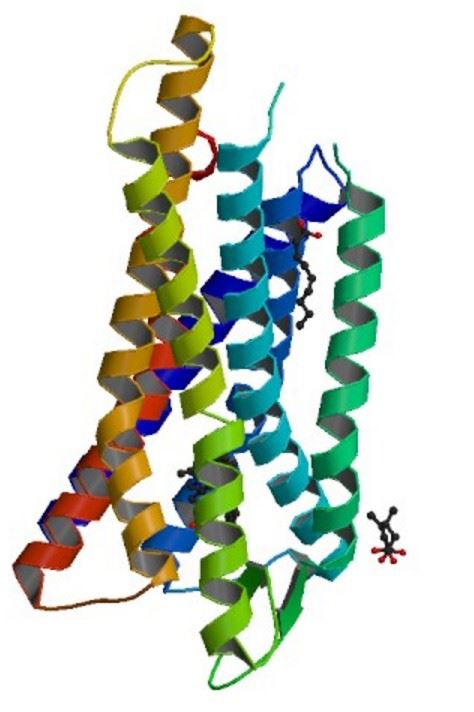Introduction of OPRL1
Nociceptin receptor (OPRL1) is a protein that in humans is encoded by the OPRL1 gene. OPRL1 is a member of the opioid subfamily of G protein-coupled receptors whose natural ligand is the 17 amino acid neuropeptide and known as nociceptin (N/OFQ). This receptor is involved in the regulation of numerous brain activities, particularly instinctive and emotional behaviors.
| Basic Information of OPRL1 | |
| Protein Name | Nociceptin receptor |
| Gene Name | OPRL1 |
| Aliases | NOP, Kappa-type 3 opioid receptor, KOR-3, Orphanin FQ receptor |
| Organism | Homo sapiens (Human) |
| UniProt ID | P41146 |
| Transmembrane Times | 7 |
| Length (aa) | 370 |
| Sequence | MEPLFPAPFWEVIYGSHLQGNLSLLSPNHSLLPPHLLLNASHGAFLPLGLKVTIVGLYLAVCVGGLLGNCLVMYVILRHTKMKTATNIYIFNLALADTLVLLTLPFQGTDILLGFWPFGNALCKTVIAIDYYNMFTSTFTLTAMSVDRYVAICHPIRALDVRTSSKAQAVNVAIWALASVVGVPVAIMGSAQVEDEEIECLVEIPTPQDYWGPVFAICIFLFSFIVPVLVISVCYSLMIRRLRGVRLLSGSREKDRNLRRITRLVLVVVAVFVGCWTPVQVFVLAQGLGVQPSSETAVAILRFCTALGYVNSCLNPILYAFLDENFKACFRKFCCASALRRDVQVSDRVRSIAKDVALACKTSETVPRPA |
Function of OPRL1 Membrane Protein
OPRL1 controls a wide range of biological functions ranging from nociception to food intake, from memory processes to cardiovascular and renal functions, from spontaneous locomotor activity to gastrointestinal motility, from anxiety to the control of neurotransmitter release at peripheral and central sites. The outcome of OPRL1 activation on the brain’s pain circuitry is site-specific. And OPRL1 activation at the spinal cord and peripheral nervous system result in morphine-comparable analgesia in non-human primates. Recent studies indicate that targeting OPRL1 is a promising alternative route to relieving pain without the deleterious side effects of traditional MOP-activating opioid therapies.
 Fig.1 Structure of OPRL1 membrane protein.
Fig.1 Structure of OPRL1 membrane protein.
Application of OPRL1 Membrane Protein in Literature
The article has demonstrated that OPRL1 modulates a variety of biological functions, ranging from nociception to food intake, from memory processes to cardiovascular and renal functions.
This article suggests that nociceptin (NC) is an endogenous antagonist of dopamine transport and that it affects locomotion and other activities at least partly by inhibiting dopamine transporter and directly affecting dopamine transmission or by inhibiting GABA transporter to indirectly change dopamine transmission.
This article suggests that the aversive effects of stress were mediated by CRF2 receptor stimulation of dynorphin release and subsequent KOR activation.
This article tells us that Salvinorin A is the first naturally occurring nonnitrogenous opioid-receptor subtype-selective agonist.
This article discusses how OPRL1 pharmacology intersects, contrasts, and interacts with the mu opioid receptor in terms of tertiary structure and mechanism of receptor activation.
OPRL1 Preparation Options
To obtain the soluble and functional target protein, the versatile Magic™ membrane protein production platform in Creative Biolabs enables many flexible options, from which you can always find a better match for your particular project. Aided by our versatile Magic™ anti-membrane protein antibody discovery platform, we also provide customized anti-OPRL1 antibody development services.
As a forward-looking research institute as well as a leading customer service provider in the field of membrane protein, Creative Biolabs has won good reputation among our worldwide customers for successfully accomplishing numerous challenging projects including generation of many functional membrane proteins. Please feel free to contact us for more information.
All listed services and products are For Research Use Only. Do Not use in any diagnostic or therapeutic applications.